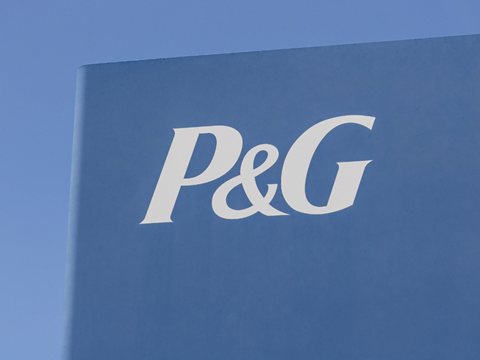
P&G reports that it has designed 80% of its packaging for recycling or reuse and exceeded this year’s target for FSC-certified virgin paper.
P&G considers a pack recyclable if the material and format are compatible with at-scale collection, sorting, processing, and end markets in at least one geography; waste-to-energy and conversion to fuels do not count.
For similar reasons – a shortage in consumer access to effective treatment facilities and the risk of contaminated plastic recycling streams – the company excludes compostable and biodegradable packaging from its packaging goals.
So far, it claims to have designed 80% of its packaging in line with its recyclability and reuse targets. It raises the example of its Gilette and Venus refillable razor packs, which are now distributed in recyclable cardboard boxes made with FSC-certified paper and at least 50% recycled content.
By 2030, P&G aspires to cut 50% of virgin petroleum plastic per unit of production compared to a 2017 baseline; its current reduction is reported at 21%.
Within the fiscal year 2023/2024, it claims that 691,000 metric tons of its packaging were made of plastic. Most of its resin use (49%) consisted of polyethylene, followed by polyethylene terephthalate and polypropylene (each 22%).
Another aim is to increase the amount of recycled content in its packaging year-on-year. It apparently used 116,000 metric tons of recycled plastic resin, with 17% of its total resin consumption believed to have come from recycled sources.
Earlier this year, for instance, P&G announced that it would utilize PureCycle’s recycled polypropylene resin in spout and dose caps for select bottle lines in 2026.
Other goals include lightweighting packs to reduce plastic consumption and greenhouse gas emissions in transit. Together, all these efforts are hoped to help consumers lessen their environmental impacts in their own homes.
“Consumers play a crucial role,” P&G explains in its FAQ. “By choosing products with minimal packaging, recycling properly and supporting brands committed to sustainability, they can help ensure more materials stay in use.
“When people recycle the right items, it leads to more material being recovered and remade. That’s why this education is so critical. We leverage standardized labels like How2Recycle or RecyClass [and] provide information on our packaging to guide people on how to recycle.”
To achieve its Ambition 2030 goals, the company plans to ensure that 100% of its paper packaging will contain either recycled or third-party certified virgin content. As of the fiscal year 2023/2024, it claims to have sourced >99 % recycled or third-party-certified wood fibre.
It is also believed to have exceeded its target to ensure that 50% of its virgin paper packaging is FSC-certified by 2025, asserting that it reached 73% in the last fiscal year.
However, its practices have come into question. Earlier this year, Hagens Berman filed a class-action lawsuit on the basis that P&G’s Charmin toilet paper brand makes misleading claims on its packaging. These allegedly include ‘hazy’ FSC and Rainforest Alliance certifications that mislead consumers about the company’s deforestation practices – and that ‘only a fraction’ of its wood pulp is sourced from FSC-certified forests.
As You Sow has also expressed scepticism that P&G will meet its 2030 targets if it does not take further action – arguing that approximately 19% of the company’s packaging is made of flexible plastic, which the non-profit considers to be ‘virtually unrecyclable in America’.
Still, P&G is collaborating with partners and projects like the Alliance to End Plastic Waste, The Recycling Partnership’s Film & Flexibles and Polypropylene Recycling Coalitions, WWF’s Re:Source Plastic initative, HolyGrail 2.0, the Circulate Capital Ocean Fund, Delterra, and the Bioplastics Feedstock Alliance.
Each of these partnerships is anticipated to drive developments in plastic separation, recovery technology, and refillable packaging models, among other developments. In particular, it sets its sights on preventing plastic pollution in regions with developing infrastructure, such as Southeast Asia and Latin America.
P&G goes on to claim that all its manufacturing sites have achieved zero manufacturing waste to landfill since 2020, encompassing 100+ operations across 35 countries. In the last fiscal year, it claims to have diverted 656,000 metric tons of manufacturing waste.
The company says it monitors its progress by tracking and tracing its waste recycling rates, both within the company itself and across its brands. Using this data, it can identify successful initiatives and areas of improvement.
Its designers, material scientists, and innovators are said to take a scientific, lifecycle approach to packaging design, taking note of a material’s environmental impacts between sourcing and end-of-life. The company cites the waste management hierarchy as a key reference point in its reduction, reuse, and recycling efforts and material management process.
Yet it suggests in its 2024 Annual Report that changing prices in raw and packaging materials, including petroleum-based materials like resins and paper-based materials, could cause instability in its costs.
“P&G takes our approach to plastics packaging seriously, but this is a complex challenge for us and the broader industry,” P&G says. “Fluctuating market conditions for recycled materials — namely the amount, quality and price of materials available at a given time — and the need for comprehensive consumer education persist.”
If you liked this story, you might also enjoy:
The ultimate guide to the Packaging and Packaging Waste Regulation in 2025
How are the top brands progressing on packaging sustainability?
Everything you need to know about global packaging sustainability regulation in 2025
The key to increasing the use of reusable packaging in supermarkets

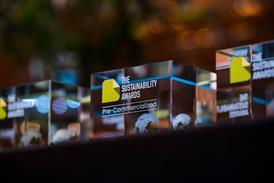
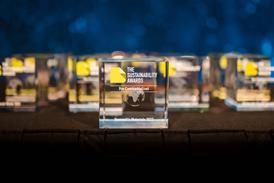
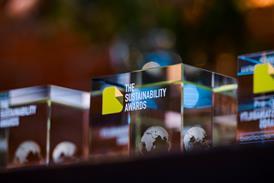

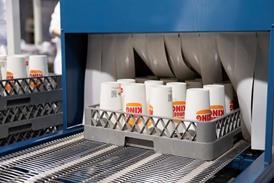






No comments yet